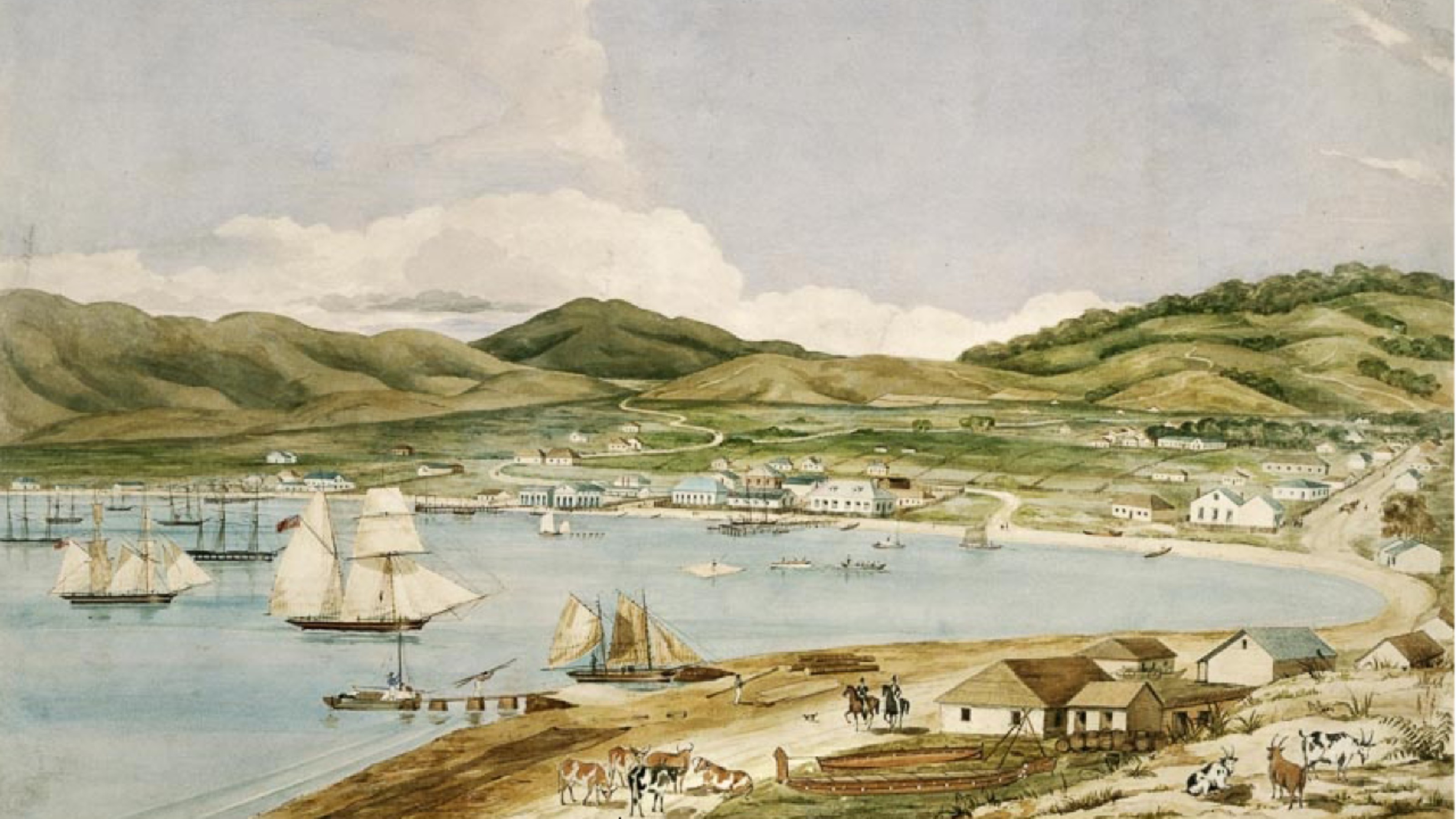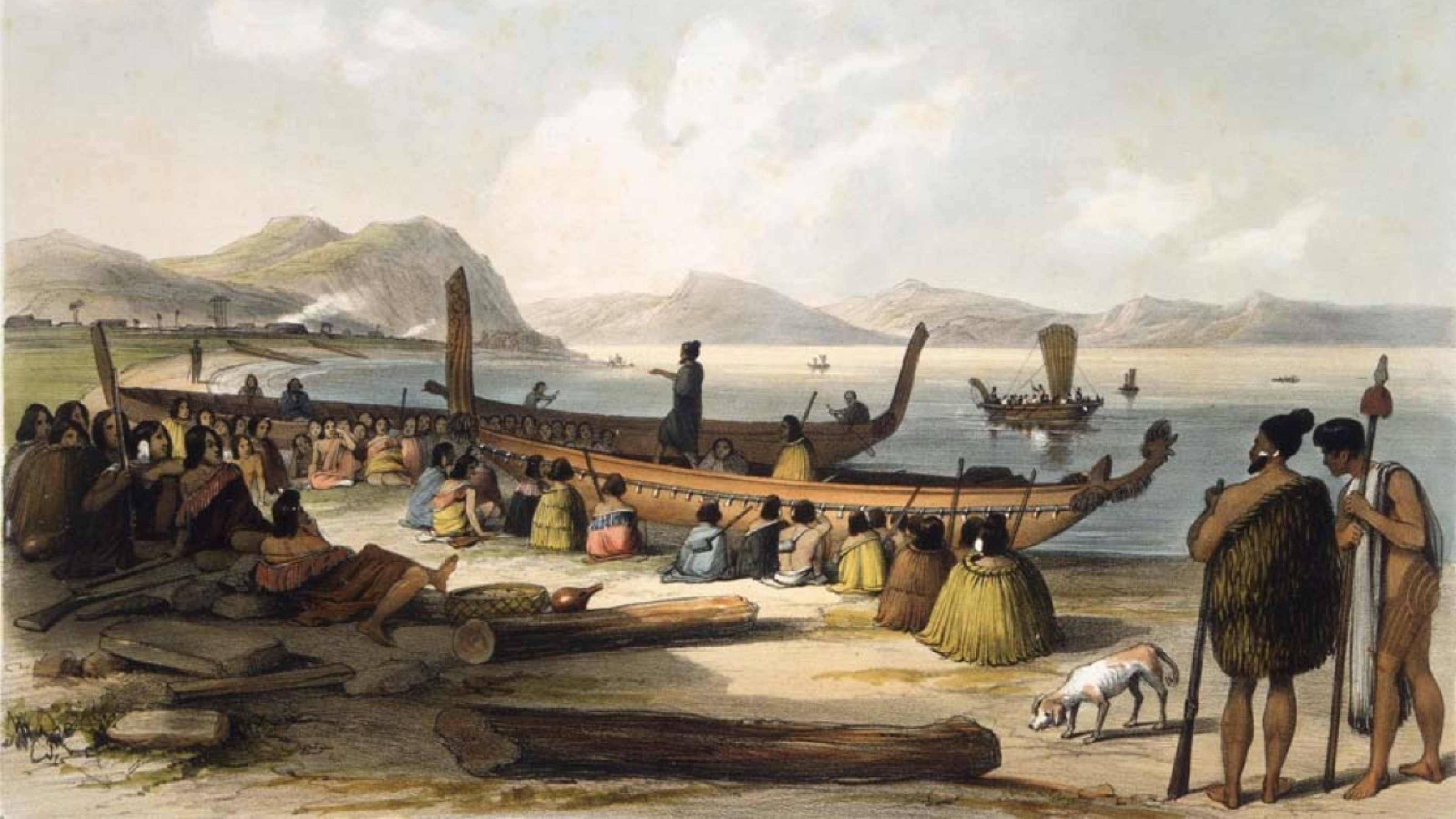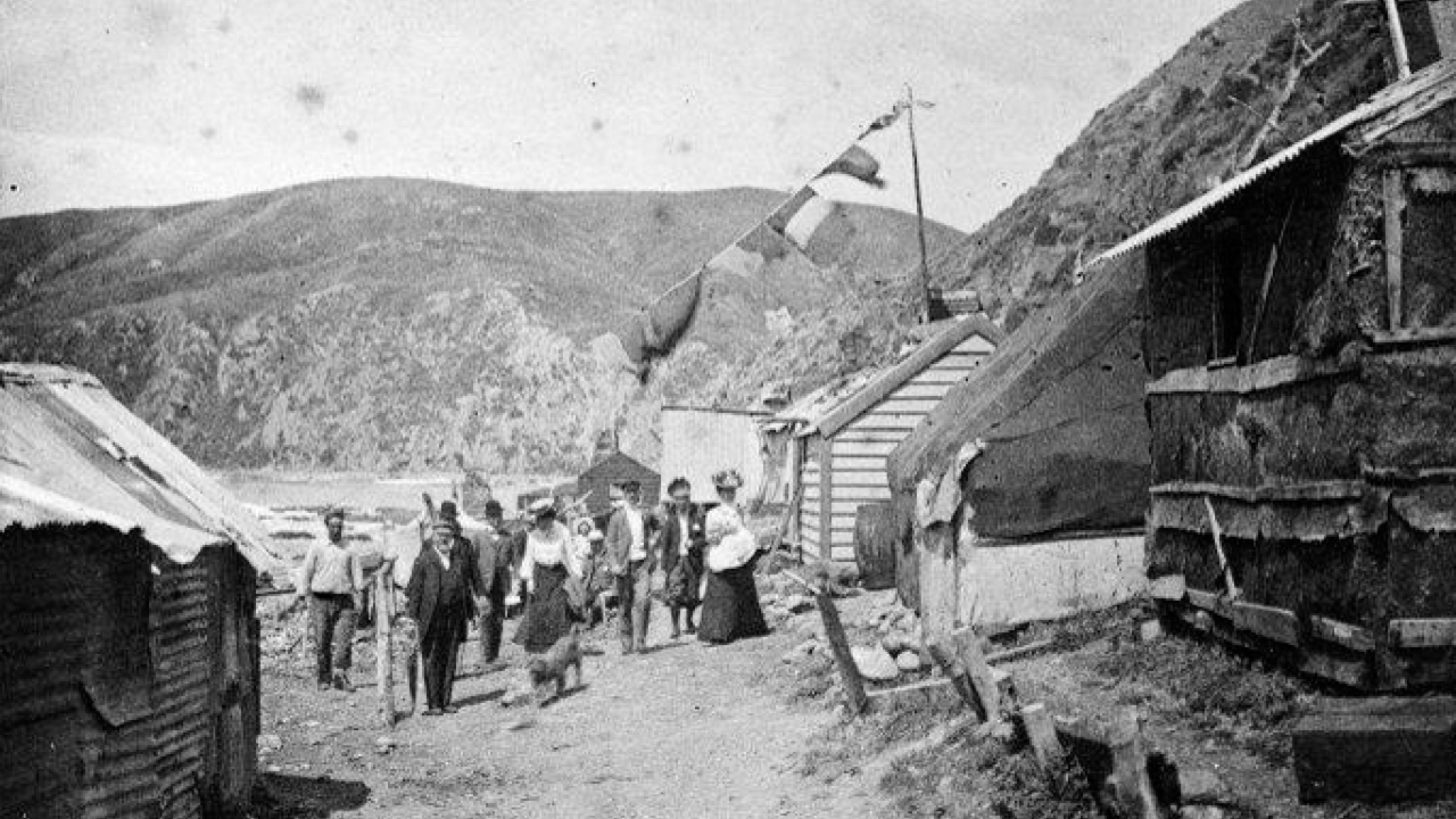History
Ohariu has a history steeped in change. Learn about the communities of the past to broaden your perspective on the future.
Māori settlements
Ohariu Valley was not intensely populated by Māori settlements prior to European colonisation. However, the land and its surrounding areas have a complex and rich history with significant changes from the first arrival of Māori in Aotearoa.
The first people to arrive in this area were believed to be the Ngāi Tara people, who were eventually replaced by the related Ngāti Rangi and then by Ngāti Ira (Love, 2018).

The impact of the Musket Wars
The arrival of Europeans in Aotearoa in the early 1800s had a profoundly destabilising effect on Māori communities, causing transformational change in Te Upoko o te Ika a Māui. The introduction of European technology caused a shift in many traditional Māori practices. Examples include the cultivation of potatoes and use of iron pots for cooking (Leach, 2010). However, it was the trading of muskets from Europeans to Māori that destabilised many of the fragile inter-tribal relationships between iwi.
The military advantage of possessing muskets meant that iwi who did not have access to muskets were left vulnerable to invasion (Te Papa, 2020). This culminated in the Musket Wars of the early 1800s to mid-1830s. During this time, the exchange of muskets fuelled widespread domestic conflict and created massive internal displacement of Māori within Aotearoa. (Ministry for Culture and Heritage, 2021).
The consequence of this on the Ohariu region was exceptionally disruptive, as the local iwi Ngāti Ira found themselves coming into contact with southward migrating iwi, being attacked by a large taua under the leadership of Ngāpuhi in 1819, and by the Amiowhenua expedition in 1821 (Ehrhardt, 1992, p.12–14).
Ngāti Ira displaced
While these conflicts did not result in the immediate settlement of these groups in the region, it contributed to a gradual displacement of Ngāti Ira. This continued from 1824, when a large southward migrating group of Ngāti Tama and Ngāti Mutunga arrived from Taranaki to escape the fighting in their homeland and seek new opportunities.
This led to Ngati Tama temporarily settling on the coast of Ohariu, and over subsequent years Ngāti Ira were driven out of the inner harbour by the newly occupying Taranaki iwi (Ehrhardt, 1992, p.19–21).
Competition for resources
Ngāti Mutunga and Ngāti Tama’s existence within the area was tenuous, as the iwi feared reprisal from Ngāti Raukawa following the battle of Haowhenua. Competition for natural resources and land, limited trade opportunities, and the fear of surrounding tribes further contributed to their decision to emigrate from Te Whanganui-a-Tara (Boast, 1995).
Exodus
The inter-iwi conflict led to the commandeering of the brig Rodney in 1835. Around 900 people from Ngāti Mutunga and Ngāti Tama emigrated to the Chatham Islands in two trips, with Ngāti Mutunga’s departure being accompanied by the gifting of their land to Te Atiawa and Ngāti Tama (Ehrhardt, 1992, p.23–25).
The exodus of Ngāti Mutunga and Ngāti Tama to the Chatham Islands tragically culminated in the genocide of the Moriori people as the iwi colonised the region (Davis and Solomon, 2022).

European settlement
In September 1839, the New Zealand Company, a private land settlement company, negotiated the Port Nicholson Deed and in 1844 the Deeds of Release with Taranaki Whānui ki Te Upoko o Te Ika, a collective of iwi representatives of the Wellington regions.
These documents purported to give up any right iwi had to land in the harbour to the New Zealand Company. The deed of purchase is widely regarded as a seriously flawed agreement. The contract had no Māori translation, nor any map to define its boundaries (Ehrhardt, 1992, p.65).
Upon the arrival of the first European settlers in Ohariu in the 1850s, the land was rapidly logged for timber and cleared for agriculture. In 1858 a road was built connecting Ohariu Valley and Johnsonville, further increasing access to the area and settlement.
After 40 years of European settlement, almost all of the native forest had disappeared.
"Today the rolling uplands and downs that stretch from Porirua down to Makara, and from the Ohariu beach to the Kaukau and Johnsonville, show scarcely a single native tree."

History references
- Love, M. (2018). Māori history of Ohariu. Cultural impact report.
- Leach, H. (2010). "Cookery in the colonial era (1769–1869)". From Kai to Kiwi Kitchen. p 35.
- War, migration, and change. (2020). URL: https://www.tepapa.govt.nz/discover-collections/read-watch-play/maori/treaty-waitangi/maori-and-british/war-migration-and. (Te Papa).
- Musket Wars, Overview. (2021). URL: https://nzhistory.govt.nz/war/musket-wars/overview. (Ministry for Culture and Heritage).
- Ehrhardt, P. (1992). Te Whanganui-a-Tara Customary Tenure 1750–1850. A report commissioned by the Waitangi Tribunal, pp 12–14, 19-21, 23-25, 65.
- Boast, R. (1995). Ngati Mutunga and the Chatham Islands—A report to the Waitangi Tribunal, pp 26–28.
- Davis, D and Solomon, M. (2017). Moriori—The impact of new arrivals. http://www.TeAra.govt.nz/en/moriori/page-4
